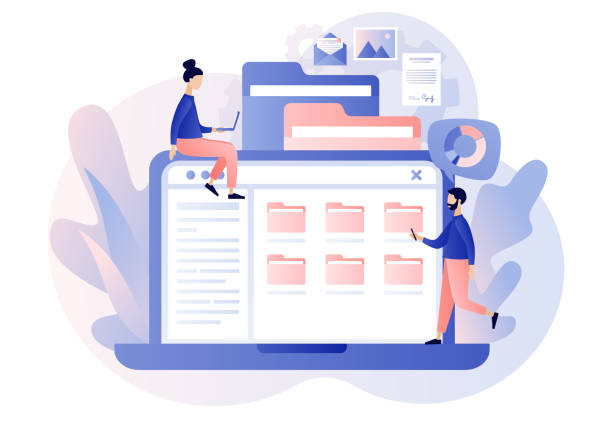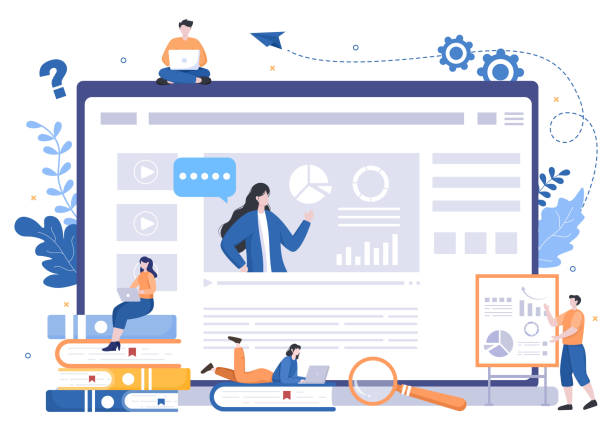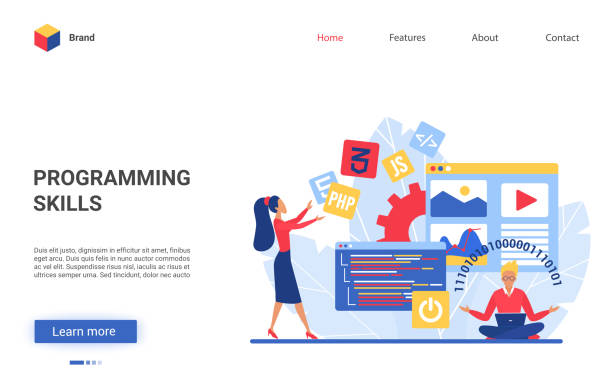1. Why Do You Need a Personal Website? An Introduction to the Importance of Online Presence
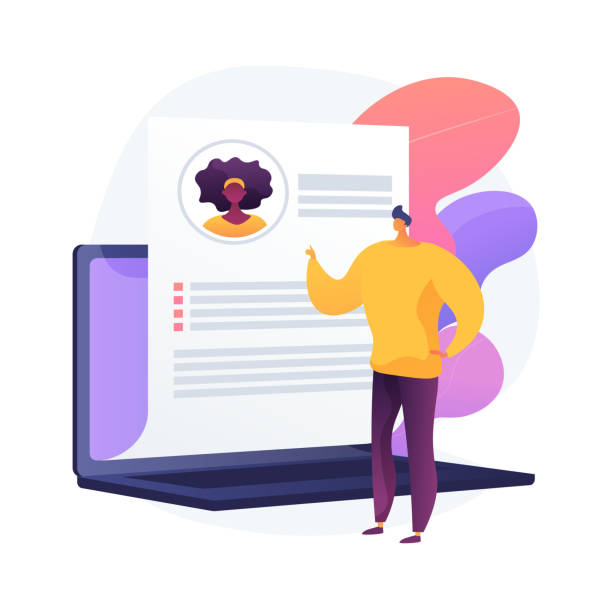
In today’s rapidly #digital transformation world, having a personal website is no longer a luxury option, but a necessity.
A personal website is your unique online platform that allows you to showcase your identity, skills, experiences, and achievements in a controlled and professional manner.
This personal page is essentially your virtual storefront that can open new doors to career opportunities, professional collaborations, and even social connections.
Beyond a resume or social media profile, a personal website provides the opportunity to present #richer content.
For example, you can present your portfolio with full details, write specialized articles, or even share your thoughts and perspectives through a personal blog.
This approach helps you build your #personal brand and be recognized as an expert in your field.
The importance of #personal website design goes beyond mere online presence; it is a long-term investment in your professional and personal path that allows you to have complete control over narrating your story.
In fact, this space allows you to own a dedicated space that perfectly aligns with your desires and needs, rather than relying on others’ platforms.
This introduction to the importance and reason behind having and designing a personal website is the starting point for understanding the value of this powerful tool.
Does losing customers who visit your site to make a purchase bother you?
Rasavab is your specialized solution for having a successful online store.
✅ Significant increase in your online sales
✅ Building trust and professional branding among customers⚡ Get a free consultation from Rasavab experts!
2. Goals and Content of an Ideal Personal Website
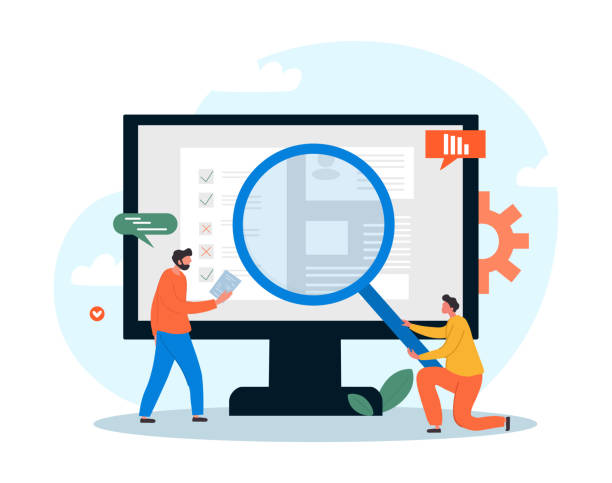
Before proceeding with personal website design, determining your goals and the type of content you intend to provide is a fundamental and very important step.
Is your goal to showcase your portfolio to attract clients? Do you want to have a blog to share your knowledge? Or perhaps you intend to highlight your online resume for potential employers? The answers to these questions will shape the structure and content of your site.
Personal website content can include a complete resume, a portfolio of completed works (design, coding, writing, etc.), an “About Me” section with a biography and personal story, specialized articles and blogs, image or video galleries, and contact information.
Thought-provoking content can encourage visitors to interact more, for example, by posing questions at the end of each article or requesting comments.
Educational content also plays a key role in attracting an audience and proving your expertise.
For instance, a graphic designer can teach the steps of designing a logo, or a programmer can share useful code snippets.
Additionally, explanatory content for sections like introducing your services or work process is essential.
This approach helps you create a strong platform for presenting your expertise and knowledge.
Personal website design with targeted content not only makes you appear more professional but also helps visitors quickly understand your value and capabilities.
This deep understanding of purpose and content is the cornerstone of a successful personal website design and helps you avoid potential confusion in the future.
3. Planning and Choosing the Right Tools for Website Creation

After determining your goals and content type, the technical planning phase and choosing the right tools for personal website design begins.
This stage includes decisions regarding the platform, hosting, and domain name.
Platforms can range from Content Management Systems (CMS) like WordPress, which powers over 40% of the world’s websites, Joomla, or Drupal, to No-Code Website Builders such as Wix, Squarespace, and Elementor.
The choice among these options depends on your technical expertise level, budget, and the degree of control you require.
WordPress, with its numerous plugins and high customization capabilities, is a powerful option for those seeking flexibility, while site builders like Wix are ideal for beginners who need to quickly establish an online presence.
Hosting is where your website files are stored and will always be accessible.
Choosing a reputable host with high speed and security is crucial.
Finally, selecting a suitable and memorable domain name that aligns with your personal brand is the last step in this phase.
This name will be your address in the virtual space and should represent you.
The table below shows some popular platforms and their features:
| Platform | Type | Ease of Use | Customization Capability | Estimated Cost (Monthly) |
|---|---|---|---|---|
| WordPress (Self-hosted) | CMS | Medium to High | Very High | Host + Domain (5-20 USD) |
| Wix | Website Builder | Very High | Medium | Paid Plans (10-30 USD) |
| Squarespace | Website Builder | High | High | Paid Plans (12-40 USD) |
| Joomla | CMS | Medium | High | Host + Domain (5-20 USD) |
Each of these tools has its own advantages and disadvantages, and their correct selection will directly impact the ease of individual site creation and its ultimate success.
This stage is one of the most vital parts of the personal website design process.
4. Principles of Visual Design and User Experience (UX)
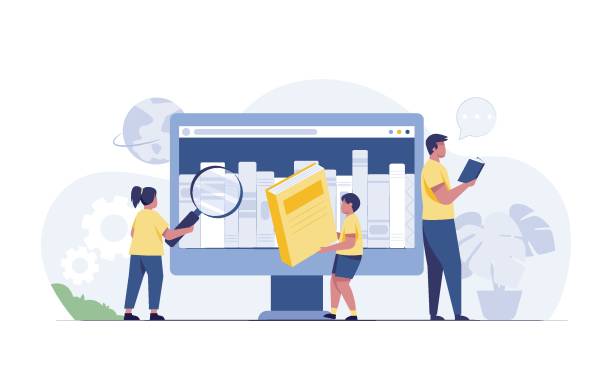
After choosing the right tools, it’s time for one of the most attractive and important parts of personal website design: visual design and User Experience (UX) optimization.
The appearance of your website is the first thing visitors encounter, and it greatly influences their initial impression of you.
An attractive and professional design not only draws users in but also encourages them to stay and explore the site further.
Principles of visual design include selecting an appropriate color palette that matches your brand identity, using readable and aesthetically pleasing fonts, designing a neat and intuitive layout, and utilizing high-quality images and videos.
Each of these elements must be carefully chosen to create a cohesive and pleasant space.
But beyond aesthetics, User Experience (UX) is critically important.
A website should be easy, intuitive, and enjoyable for users.
This means ensuring simple and clear navigation, fast page loading times, and full compatibility with various devices (Responsive Design), including mobiles and tablets.
Today’s users have high expectations for websites, and if your site is slow or if information is difficult to find, they will quickly leave.
A personal website with excellent user experience helps visitors quickly find what they are looking for and creates a sense of satisfaction in them.
For example, menus should be clear and understandable, contact forms should be short and simple, and Call-to-Action buttons should be prominent and encouraging.
Investing time and effort in UX optimization ensures that your individual site is not only beautiful but also efficient and effective.
A personal website design that is both visually appealing and offers a flawless user experience will be your winning card in the online space and differentiate you from competitors.
This part of personal website creation requires high technical knowledge and creativity.
Do you dream of a thriving online store but don’t know where to start?
Rasavab is your comprehensive solution for e-commerce website design.
✅ Attractive and user-friendly design
✅ Increased sales and revenue⚡ Get a free consultation
5. Producing Engaging Content and Optimizing It
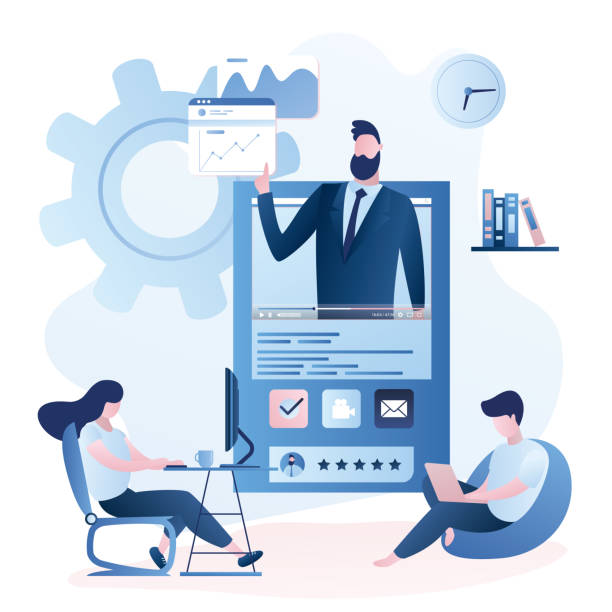
As previously mentioned, content is king, and this statement also applies to personal website design.
After preparing the technical and visual infrastructure, it’s time to produce high-quality and engaging content.
Your content should not only provide valuable information but also reflect your personal tone and style.
For a personal website, content can include specialized blog articles, personal stories, portfolio descriptions, and educational videos.
Specialized content, such as a step-by-step tutorial on a specific skill, can establish you as an authority in your field.
Analytical content that delves deeply into a topic demonstrates your insight and critical thinking.
In addition to quality, optimizing content for search engines (SEO) is also highly important.
This means strategically using keywords related to your field, optimizing titles and meta descriptions, and structuring content appropriately using H1, H2, and H3 tags.
For example, if you are a photographer, using terms like “portrait photography,” “best photography portfolios,” or “landscape photography guide” in your content will help you appear in search results.
Content quality goes beyond keywords; your content must be valuable, unique, and engaging to encourage users to stay on the site and return.
Use high-quality images and videos to enhance visual appeal.
Also, regularly updating content not only makes your site always appear fresh and dynamic but also sends a positive signal to search engines.
For example, you can create a news section to share the latest developments in your field or news related to your projects.
This approach adds depth and value to your personal website design and transforms it into a powerful tool for attracting an audience and proving your expertise.
Producing entertaining content can also help increase engagement and sharing.
6. Security and Maintenance Tips for a Personal Website

After successfully designing a personal website and publishing content, security and maintenance aspects become equally important.
A secure and up-to-date website builds visitor trust and protects your and your users’ data.
Cyberattacks, though less common for personal websites, can lead to data loss, site destruction, or even identity misuse.
Therefore, adopting preventive security measures is essential.
These measures include using strong and unique passwords, regularly updating the platform and plugins (especially in WordPress), installing an SSL certificate for communication encryption (which makes your site load with HTTPS and recognized as “secure” in browsers), and using reputable security plugins.
Also, taking regular backups of your website is one of the most important maintenance actions.
In case of any technical issue, malfunction, or cyberattack, these backups allow you to quickly restore your website and prevent data loss.
In addition to security, website maintenance also includes monitoring its performance.
Regularly check page loading speed and, if necessary, optimize images or use caching tools.
Identify and fix broken links to improve user experience and prevent your site’s SEO score from decreasing.
Furthermore, by examining analytical tools like Google Analytics, you can understand visitor behavior, identify popular pages, and adjust your content strategy accordingly.
Personal website design is only the first step; continuous maintenance and optimization ensure its dynamism and security in the long run.
A personal website that is consistently updated and maintained not only remains technically sound but also gradually becomes a more valuable resource for you and your audience, acting as a stable and reliable platform.
7. Search Engine Optimization (SEO) and Increasing Traffic
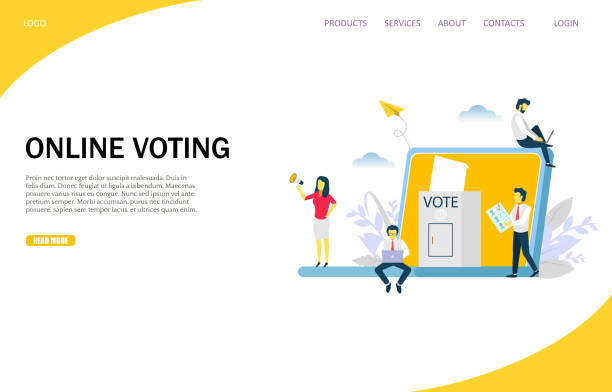
After designing your personal website and uploading content, the next step is to ensure its visibility on search engines like Google.
Search Engine Optimization (SEO) is a set of techniques that helps your site achieve a higher ranking in search results, thereby attracting more visitors.
This process begins with choosing appropriate keywords.
Keywords are phrases that users type when searching on Google.
You should select words that are both relevant to your expertise and have a suitable search volume.
Tools like Google Keyword Planner can assist you in this regard.
In addition to keywords, technical SEO factors are also highly important.
These include site loading speed, mobile compatibility, SEO-friendly URL structures, using Alt tags for images, and proper structuring of headings (H1, H2, H3) within the content.
Creating Sitemaps and submitting them to Google Search Console helps Google better index your pages.
Building internal and external links is also a significant part of SEO.
Internal links help users and search engines discover different pages on your site, while external links (especially backlinks from reputable sites) increase your site’s credibility.
High-quality and unique content that is regularly updated is appealing to both users and search engines.
Finally, engaging on social media and sharing website content there can also help increase traffic and improve SEO.
The table below provides a summary of key SEO tips:
| SEO Element | Importance | Example/Explanation |
|---|---|---|
| Keywords | Very Important | Keyword research and natural use in text |
| Site Speed | Critical | Image optimization, using caching |
| Mobile Compatibility | Very Important | Responsive Design |
| Quality Content | Critical | Specialized articles, educational blogs |
| Link Building (Internal/External) | Important | Linking to relevant internal pages, gaining reputable backlinks |
| Title Tags and Meta Descriptions | Important | Engaging and including keywords |
Paying attention to these points in personal website design significantly increases your chances of being seen.
Learning SEO principles is an ongoing process, and with changes in Google’s algorithms, you need to update your knowledge and strategies.
8. Promoting and Advertising Your Personal Website
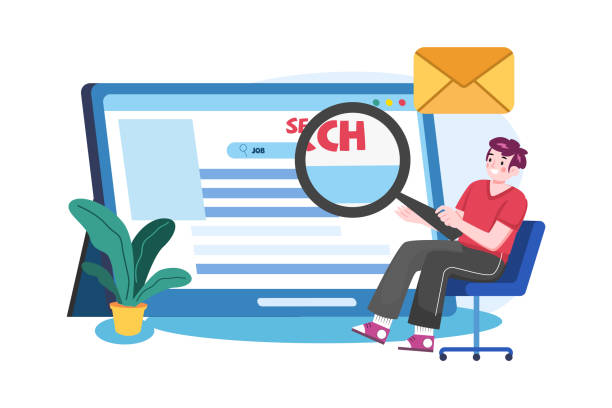
After completing your personal website design and optimizing it for search engines, it’s time to promote and advertise it.
Having a great website without visitors is like owning a beautiful shop on a deserted street.
To attract the attention of your audience, you need marketing strategies.
One of the most effective ways is to use social media.
Share your website content on platforms like LinkedIn, Instagram, Twitter, and Facebook.
Each platform requires a different approach; for example, on LinkedIn, you can share your specialized articles, while on Instagram, you can place your website link in your bio with attractive images of your portfolio.
Participating in online forums and specialized groups related to your field is another way to attract traffic.
By providing guidance and answering user questions, you can establish yourself as an expert and place your website link in your signature.
Collaborating with other bloggers or experts in your field (Guest Blogging) can also help you reach new audiences and gain valuable backlinks that improve SEO.
Using email newsletters is also an excellent method to maintain communication with visitors and inform them about new content or your projects.
You can include a newsletter signup form on your website.
Data analysis from tools like Google Analytics helps you optimize your advertising campaigns and understand which channels bring the most traffic to your site.
This approach allows you to adopt the best strategy for increasing individual site traffic.
Remember that website promotion is an ongoing process, and with time and continuous effort, its results will become apparent.
Building and designing a personal website is only half the battle; the other half is dedicated to its dissemination and promotion to fully utilize its potential.
Tired of losing business opportunities due to not having a professional corporate website? Worry no more! With Rasavab’s corporate website design services:
✅ Your brand’s credibility and professionalism will increase.
✅ You will attract more customers and sales leads.
⚡ Get a free consultation right now to get started!
9. Performance Analysis and Continuous Website Improvement
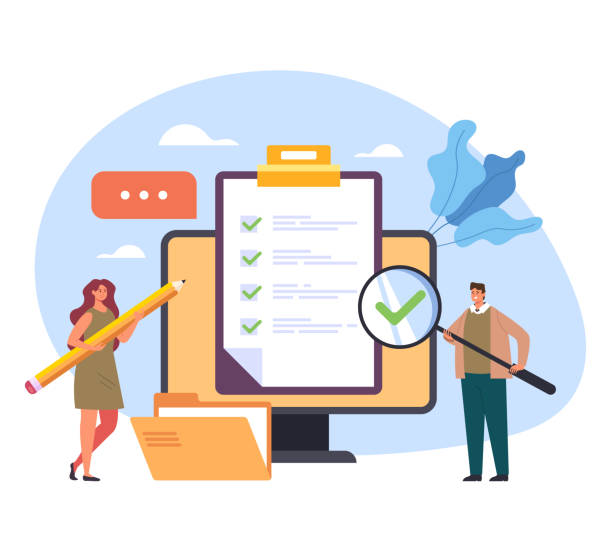
After launch and promotion, the work of personal website design doesn’t end; instead, it enters a phase of continuous analysis and improvement.
To ensure your website continues to meet its goals and operates effectively, you need to regularly monitor and analyze its performance.
Tools like Google Analytics and Google Search Console are invaluable resources for this purpose.
Google Analytics allows you to track site traffic, visitor sources (where they came from), popular pages, user dwell time, and many other metrics.
This data provides you with deep insights into user behavior and how they interact with your content.
Google Search Console also provides information on how your site performs in Google search results, including the keywords users employed to find you, click counts, and technical issues that might affect your site’s indexing.
Using this information, you can make data-driven decisions to improve your website.
For example, if you notice that a particular page has low traffic, it might need SEO optimization or content rewriting.
If the Bounce Rate is high, the issue might be with the visual design or user experience.
Additionally, surveying visitors or receiving direct feedback through a contact form can help identify strengths and weaknesses.
Continuous website improvement includes content updates, technical error fixing, loading speed enhancement, and A/B testing for various design elements.
This cyclical process transforms your personal website into a dynamic and efficient tool that aligns with your evolving needs and those of your audience.
A website that is continuously analyzed and improved not only performs better but also gains more value and credibility over time, helping you achieve long-term goals.
10. The Future of Personal Websites and New Trends

The world of the web is constantly changing and evolving, and personal website design is no exception.
Looking at the future and emerging trends can help you prepare your website for years to come and always stay one step ahead.
One of the most important trends is the growing importance of Artificial Intelligence (AI) in the web.
AI can play a role in content optimization, user experience personalization, and even in web design and development processes.
For example, AI-powered chatbots can provide instant support to visitors or personalize suggested content based on user interests.
Virtual Reality (VR) and Augmented Reality (AR) also have the potential to change how we interact with websites.
Although still in early stages for personal websites, in the near future, we might see VR portfolios for artists or AR educational experiences.
Voice and voice search are also growing, so optimizing content to answer voice queries could become more important in the future.
Data security and privacy are also becoming more critical every day.
Users expect their data to be secure, and you must earn this trust by adhering to privacy regulations and using advanced security protocols.
Furthermore, interactive and engaging content will also play a significant role.
Using attractive animations, surveys, quizzes, and mini-games can significantly increase user engagement.
No-Code/Low-Code platforms are also becoming increasingly powerful, making personal website design even simpler for individuals without programming knowledge.
Ultimately, personal website design in the future will move towards deeper personalization, higher speeds, and more immersive user experiences.
By being aware of these trends and adapting your website to them, you can ensure that your online platform remains advanced and relevant, serving as the best tool for introducing and enhancing your personal brand.
Frequently Asked Questions
| Question | Answer |
|---|---|
| What is a personal website? | A personal website is an online platform that an individual creates to showcase their information, resume, portfolio, interests, or ideas. This website serves as a digital business card and a place for personal branding. |
| Why do I need a personal website? | Having a personal website helps you establish a professional online presence, display your skills and experiences, connect with your audience, find new job opportunities, and boost your personal credibility. |
| What content should I include on my personal website? | Typical content includes: An About Me page (biography, education, experiences), a resume, a portfolio (projects, articles, designs), a blog (writings, perspectives), and contact information. |
| What are the essential steps to create a personal website? | The steps include: 1. Defining purpose and audience 2. Choosing a domain name 3. Selecting hosting 4. Choosing a platform (e.g., WordPress or custom coding) 5. Designing and structuring 6. Content creation 7. SEO and optimization 8. Launch and maintenance. |
| Should I use a Website Builder or code it myself? | If you lack coding knowledge or are looking for a quick solution, website builders (like Wix, Squarespace) or CMSs (like WordPress) are good options. If you want full control and high flexibility and have technical knowledge, coding is the best way. |
| How important is design (appearance) for a personal website? | Website design is very important. An attractive, user-friendly, and professional design ensures visitors have a good experience, stay longer on the site, and take your personal brand seriously. Poor design can have a negative impact. |
| What is Responsive Design and why is it important? | Responsive Design means designing a website whose appearance and functionality automatically adapt to the screen size of the user’s device (desktop, tablet, mobile). This feature is crucial for ensuring a good user experience across all devices. |
| How can I choose a good domain name for my personal website? | A domain name should be relevant to your identity (usually your first and last name), short and memorable, easy to pronounce, and avoid excessive numbers or hyphens. Common extensions like .com or .ir are usually preferred. |
| What is Web Hosting? | Web hosting is space on an internet-connected server that stores your website files (such as code, images, videos) and makes them available to users 24/7. Without hosting, your website will not be accessible. |
| How can I promote my personal website? | You can use social media, Search Engine Optimization (SEO), content marketing (blogging), sharing links in your email signature, and networking with others in your field to promote your website. |
And other services of Rasavab Advertising Agency in the field of advertising
Smart Content Strategy: Transform website traffic growth with marketing automation.
Smart Marketplace: A blend of creativity and technology to increase click-through rates through intelligent data analysis.
Smart SEO: A dedicated service for growth in customer behavior analysis based on intelligent data analysis.
Smart Content Strategy: Professional optimization for customer behavior analysis using user experience customization.
Smart Marketing Automation: A fast and efficient solution for increasing sales with a focus on attractive UI design.
And over a hundred other services in the field of internet advertising, advertising consulting, and organizational solutions
Internet Advertising | Advertising Strategy | Advertorials
Sources
Personal Website Design Guide
How to Build a Personal Website?
Personal Website Design Tips
What is a Personal Website and How to Create One?
? For your business’s leap in the digital space, Rasavab Afarin Digital Marketing Agency smooths your path to success with services such as custom website design, Search Engine Optimization (SEO), and professional social media management.
📍 Tehran, Mirdamad Street, next to the Central Bank, South Kazeroon Alley, Ramin Alley, No. 6


